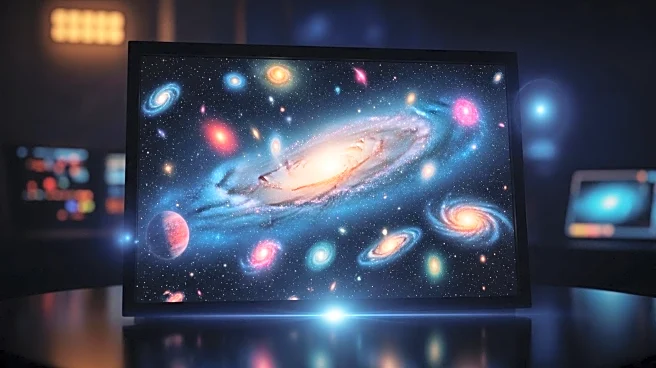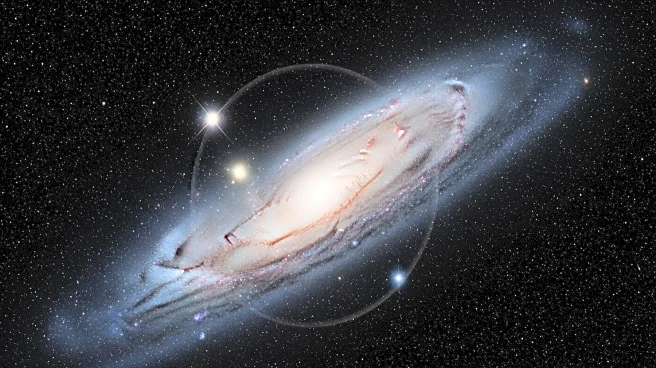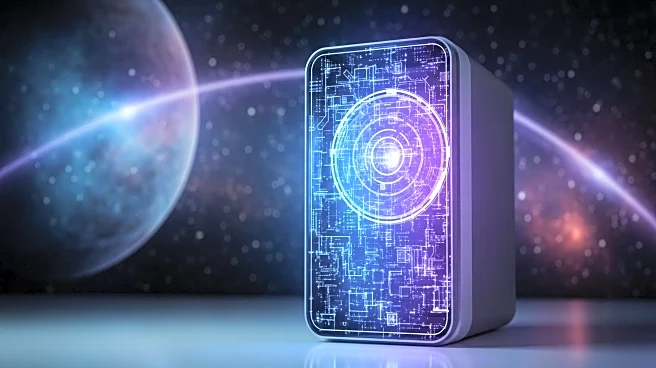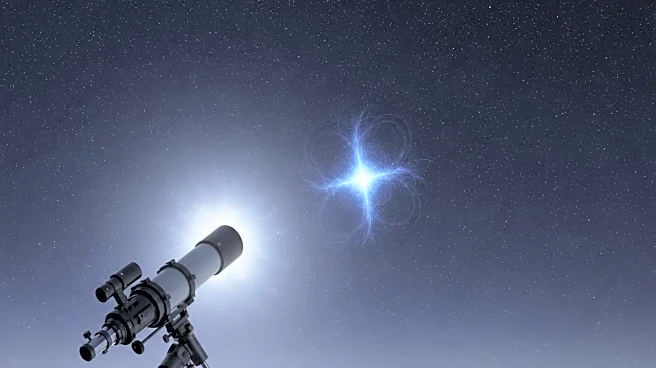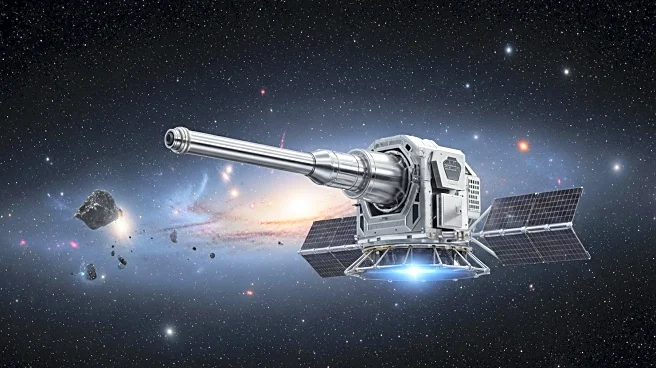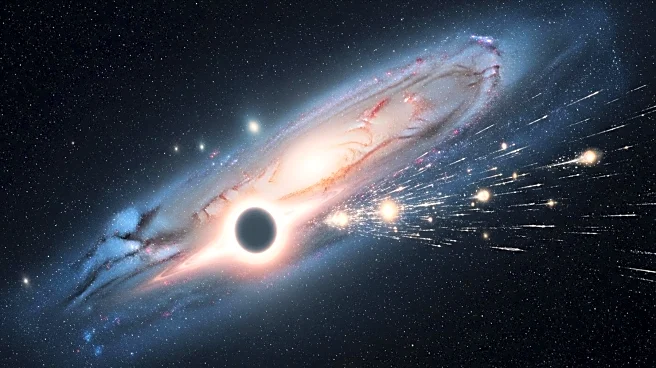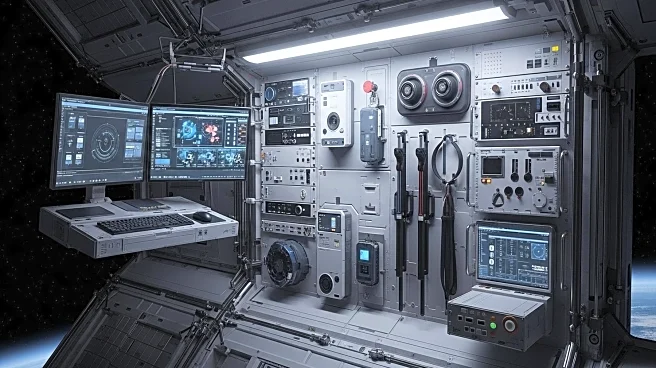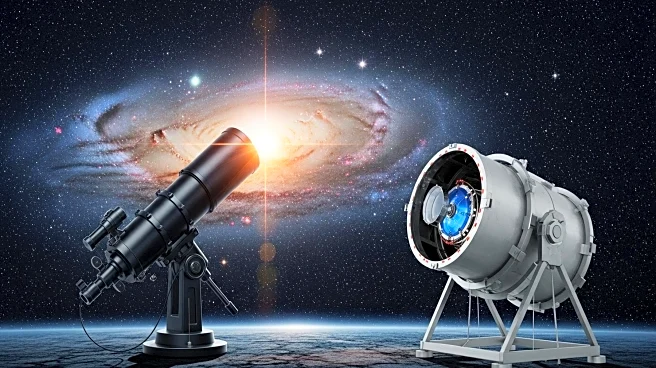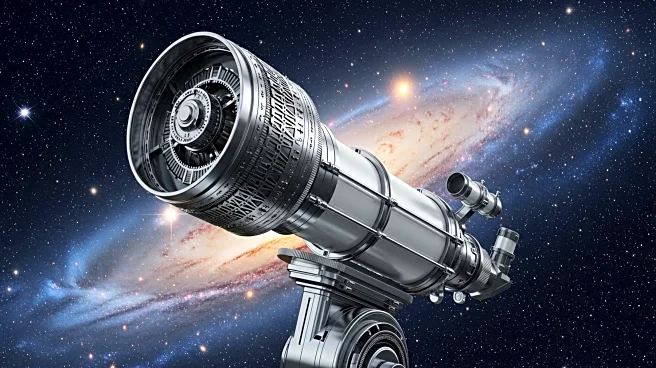What is the story about?
What's Happening?
The Euclid Consortium, an international group managing the European Space Agency's Euclid space telescope, has published the most extensive simulation of the universe to date. Named Flagship 2, this simulation maps 3.4 billion galaxies and tracks the gravitational interactions of over 4 trillion particles. Developed using an algorithm by astrophysicist Joachim Stadel from the University of Zurich, the simulation was run on the supercomputer Piz Daint, one of the most powerful in the world at the time. The simulation is crucial for analyzing data from the Euclid telescope, which has been mapping billions of galaxies since 2023 to study dark energy and dark matter distribution. The telescope aims to scan about one-third of the night sky, producing vast amounts of data that simulations like Flagship 2 help process efficiently.
Why It's Important?
This simulation is significant as it supports the Euclid telescope's mission to challenge and expand current cosmological models. By providing a detailed virtual model of the universe, Flagship 2 aids in understanding dark energy, the force driving the universe's expansion. The Euclid telescope's observations, which look back up to 10 billion years, may reveal new characteristics of dark energy, potentially altering the standard cosmological model. This could have profound implications for astrophysics, offering insights into the universe's composition and the forces at play. The simulation also enhances the efficiency of data processing, accelerating the pace of discovery in space research.
What's Next?
The Euclid Consortium plans to release the next set of observational data in spring 2026. As the Euclid telescope continues its mission, researchers anticipate that its observations will closely match predictions from Flagship 2, though surprises are expected. The ongoing study of dark energy and its role in the universe's expansion remains a key focus, with potential discoveries that could redefine current scientific understanding. The consortium will continue to analyze data to test the standard cosmological model and explore any emerging anomalies.
Beyond the Headlines
The Euclid telescope's mission and the Flagship 2 simulation highlight the intersection of technology and astrophysics, showcasing how advanced computing can drive scientific discovery. The project underscores the importance of international collaboration in space research, as scientists from various countries contribute to understanding the universe's mysteries. The simulation also raises philosophical questions about the nature of reality and our place within the cosmos, as it provides a virtual representation of the universe on an unprecedented scale.
AI Generated Content
Do you find this article useful?
